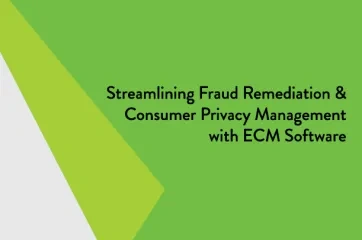Professional bank and credit union couriers are used to move documents—and sometimes cash—between a financial institution’s locations, often from a branch to its main facility. As banks and credit unions transition increasingly toward integrated online banking systems, however, the need for professional bank couriers has decreased.
Why are Professional Bank Couriers Needed?
Professional bank couriers have played an important role in the finance industry for many years. A bank or credit union with a centralized system might utilize a courier company to collect checks, deposits, and cash from branches and deliver them to the main facility for processing. Other bank couriers transfer documents from one location to another or occasionally retrieve archived boxes of documents from storage when subpoenaed records must be supplied.
Transition from Professional Bank Couriers to Digital Systems
Within the last several decades, many financial institutions have switched to electronic recordkeeping systems, reducing the need for—and added cost of—professional bank couriers. This is especially notable in the case of loan departments. Before the introduction of electronic systems, loan documents would be generated at a bank or credit union’s main location and then couriered to the appropriate branch for signatures at closing. Often these completed documents would be couriered back to the main branch for filing.
Digital banking systems have dramatically reduced the need for traditional courier functions. Loan documents can now be printed at a branch location, signed, scanned, and uploaded to a central document tracking system. Documents that are eSigned eliminate the need for paper altogether. Electronic documents can then be accessed from any secured, connected terminal within the bank’s network. The only items couriered may be a very few original, wet-signature documents (such as certain loan documents that must be retained in hard copy format for legal purposes).
Back-Office Uses of Couriers
Banks and credit unions also use couriers to route documents for internal use. For example, a financial institution might use couriers to deliver human resource documents between a main facility and branches. Couriers can also bring invoices from an institution’s branches to its accounts payable department at the main office.
Of course, as with customer-facing documents, electronic document management technology has reduced the need for couriers here, too.
Drawbacks of Professional Bank Couriers
Although professional bank couriers fulfill an essential role in the banking industry, overreliance on couriers comes with several drawbacks:
- Cost: Couriers usually charge a per-mile or per-job rate, which can add up for banks and credit unions with large geographic footprints.
- Time: Couriers can only move documents as quickly as the trip allows. Internal stakeholders must wait until the documents arrive before completing their work.
- Risk of Information Loss: Whenever a document is physically moved from one location to another, the human-error element is introduced, and the chance of the paperwork being damaged, lost, or misfiled multiplies.
Given these drawbacks, a growing number of banks and credit unions are re-investing their courier expenses into modern document imaging solutions. Simply put, the more an institution uses an electronic document system, the less paper is generated. This reduces the need for couriers, their associated expense, and risk of error.
Document Management Resources
For more information about document management, be sure to check out our extensive resource library with free document tracking spreadsheets, whitepapers, and eBooks.
Looking for more banking definitions? Check out our banking definitions page.














